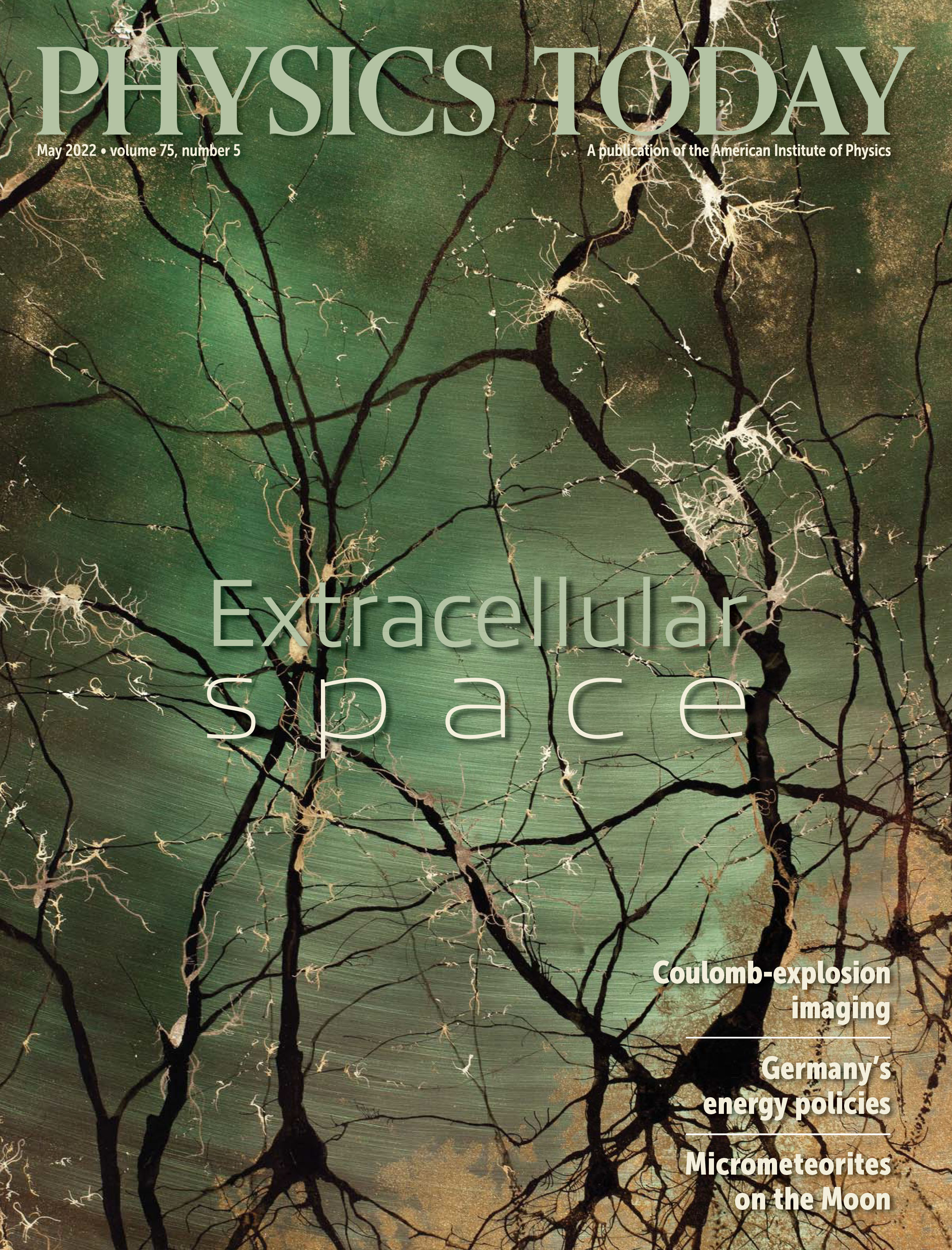May 2022 Issue of Physics Today Is Online & in the Mail

Susanna Kohler American Astronomical Society (AAS)
Physics Today, the flagship publication of the American Institute of Physics (AIP), is the most influential and closely followed physics magazine in the world. With authoritative features, full news coverage and analysis, and fresh perspectives on technological advances and groundbreaking research, Physics Today informs readers about science and its role in society. Members of the AAS, an AIP Member Society, automatically receive free print and online subscriptions to the magazine. Physics Today Online, the magazine’s internet home, presents an enhanced digital edition and provides a valuable online archive.
 In the May 2022 Issue
In the May 2022 Issue
The Secret World in the Gaps between Brain Cells
Innovations in diffusion analysis and imaging techniques have gradually revealed the ubiquity and importance of extracellular space. — Charles Nicholson
ABACC to the Future
At the end of the Cold War, two South American rivals built a system of nuclear safeguards that culminated in the 1991 founding of a bilateral organization, ABACC. Can that nonproliferation regime be exported? — Christopher Dunlap
Coulomb-Explosion Imaging Tackles an 11-Atom Molecule
Until now, the technique was thought to work only on molecules with no more than about five atoms. A powerful X-ray source leaves that limit in the dust. — Johanna L. Miller
Glass Ages in Material Time
The long-standing assumption that the same relaxation processes underlie linear and nonlinear aging is now backed up by experiments. — Christine Middleton
Further Delays at ITER Are Certain, but Their Duration Isn’t Clear
A halt to construction, pandemic-caused delays in deliveries, labor strife, and concerns about potential beryllium exposure are among recent challenges to the fusion project. — David Kramer
Quasicrystals and the Birth of the Atomic Age
The first nuclear bomb explosion led to the formation of a novel form of matter, known as a quasicrystal, with an elemental composition that had never been seen before. — Luca Bindi and Paul Steinhardt

